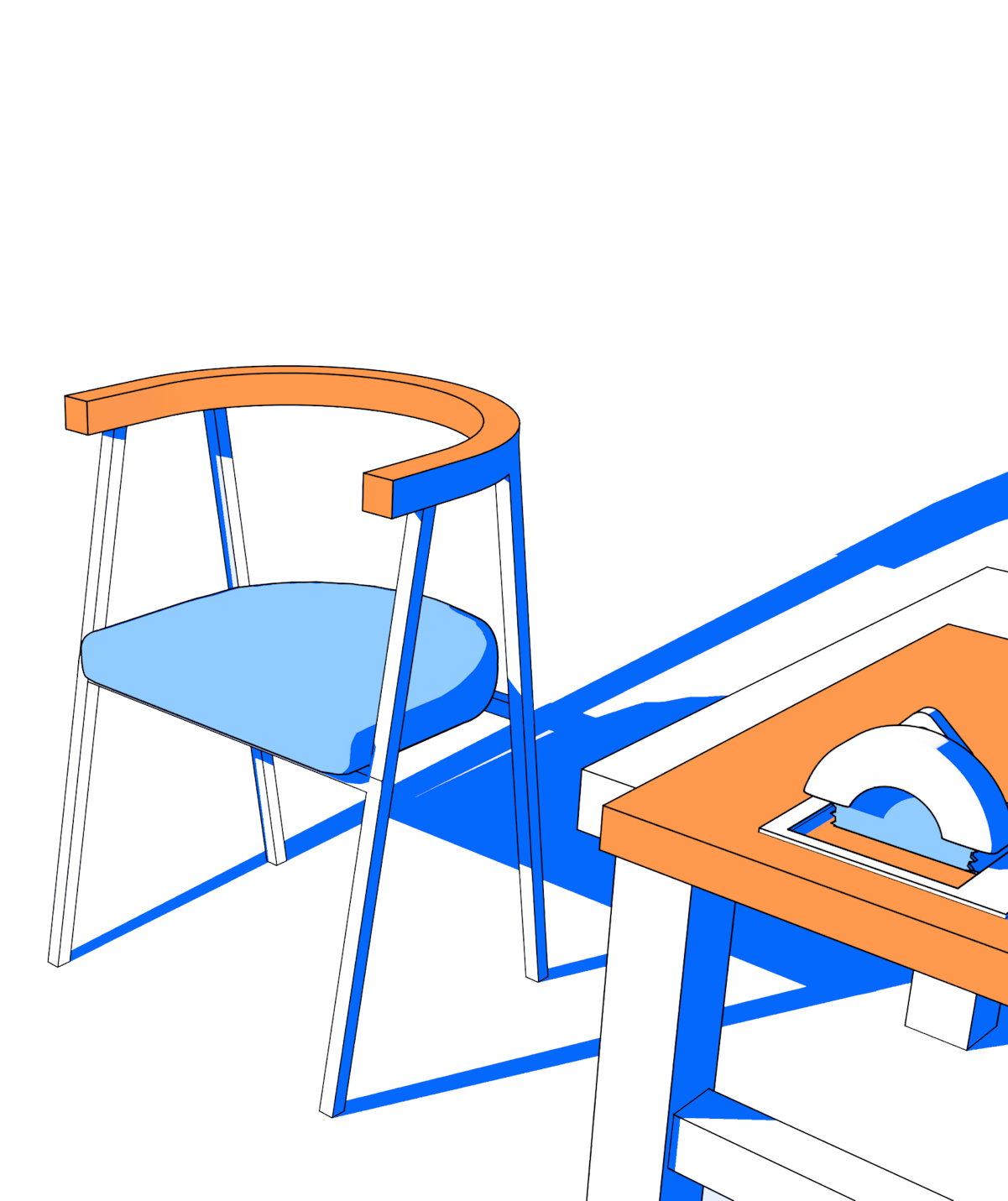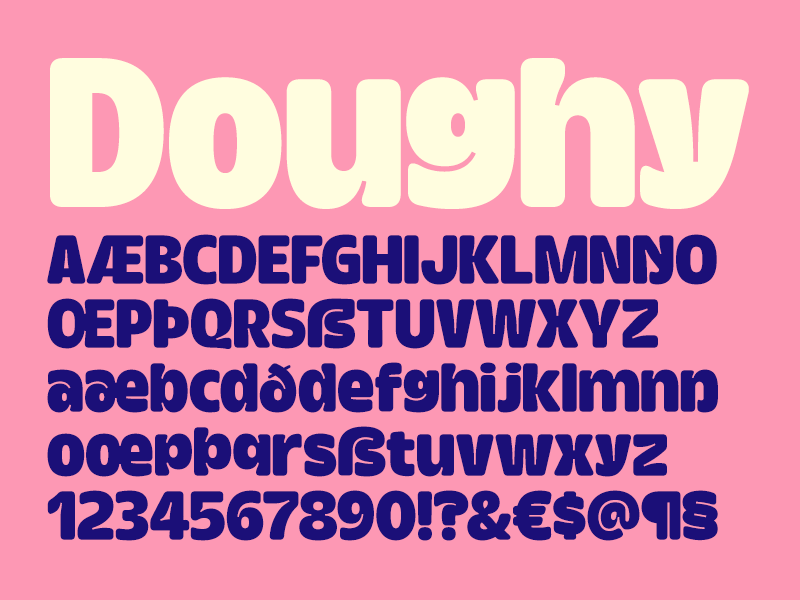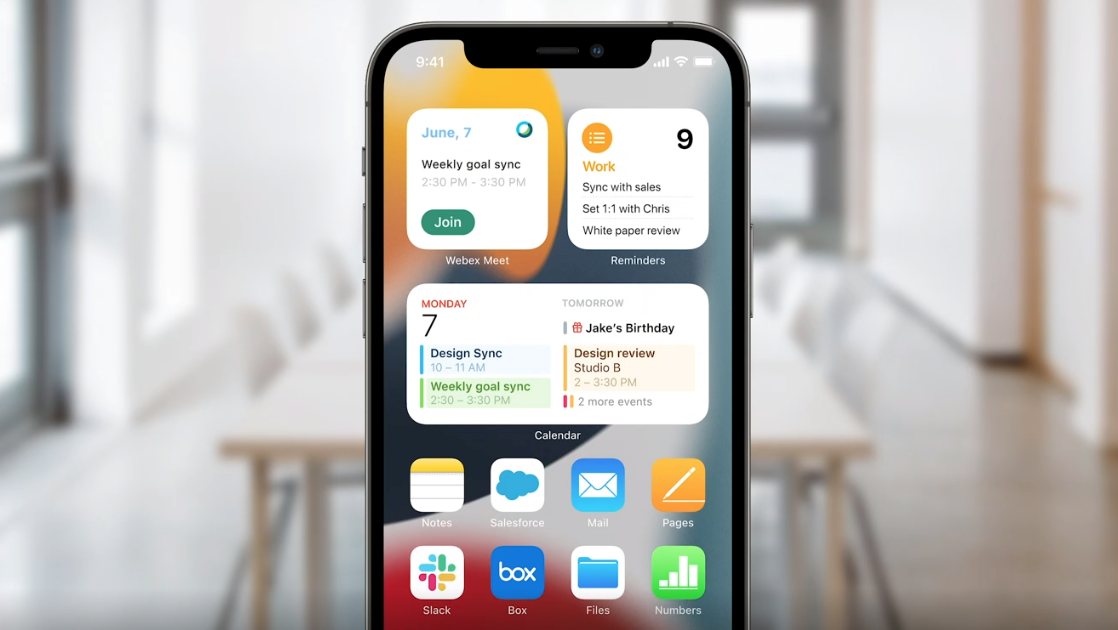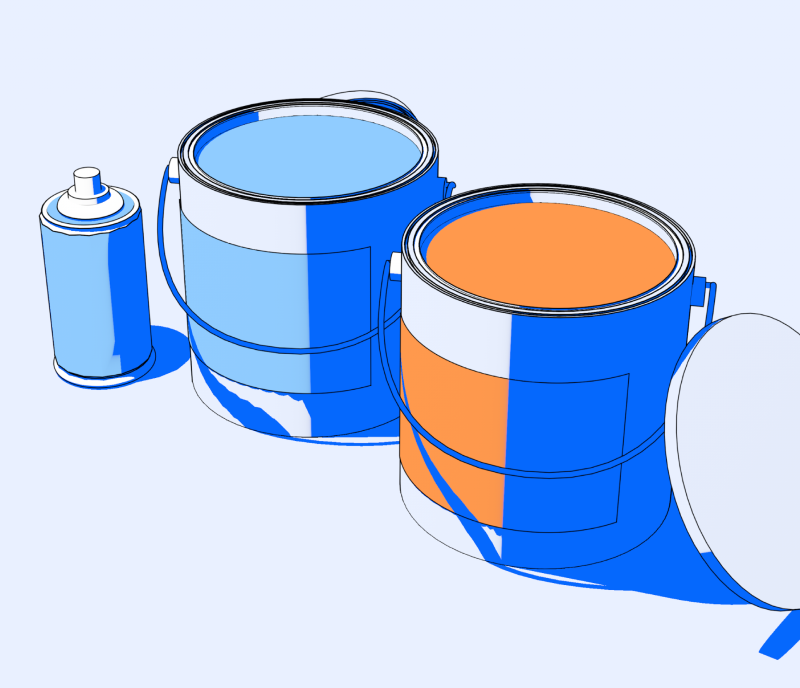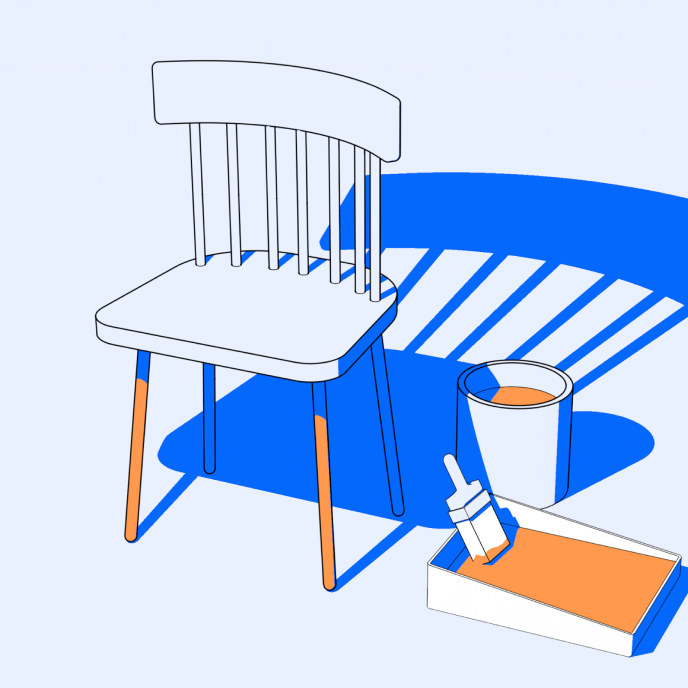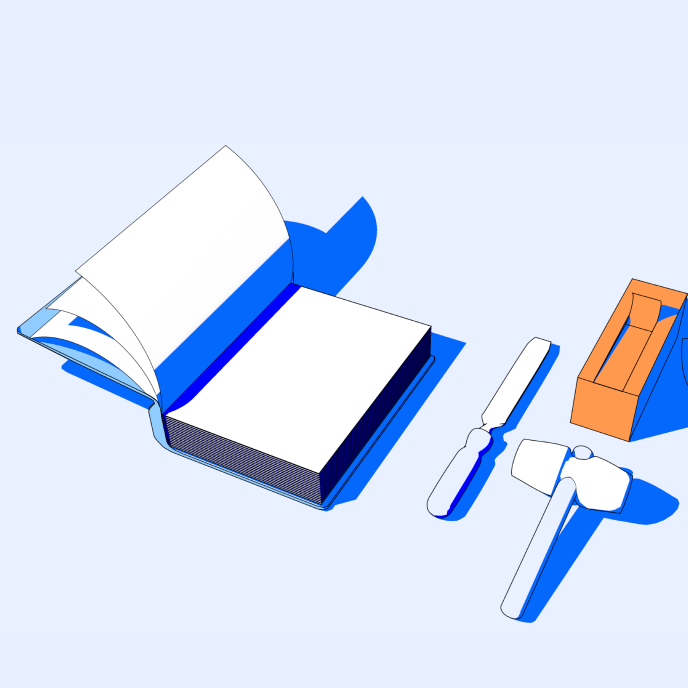User interface design (UI) is ever-changing, and trends come and go. With emerging technology and greater customer demands than ever before, UI and UX designers need to stay sharp if they hope to stay on top.
In this article, we’ll look at modern UI design. We’ll explore examples of new designs released recently and share tips on how to design products that resonate with today’s customers.
We’ll also share eight essential skills any modern UI designer needs to join some of the most forward-thinking design teams out there.
What is UI design?
UI design, or user interface design, is the visual display of a website, app, or physical product that facilitates the interaction between the user and the product. A UI designer creates all visual elements and interaction points to ensure the product is easy to use and aesthetically pleasing.
UI designers work with UX designers (user experience designers) who focus on creating valuable user experiences. UI and UX designers share common skill sets and methodologies, although their roles and goals differ slightly.
Some of the most exciting modern UI design trends currently revolve around personalization, artificial intelligence, and—of course—aesthetics. We’re about to explore some of the brands setting top examples of these trends.
What is new in UI design in 2021?
There are some really exciting trends and developments happening in design right now, with some companies leading the charge with extraordinary new technology and features. Let’s take a look.
3D designs are leveling up
3D designs are leveling up from the traditional drop shadows and geometric shapes. Now, they help breathe life into an app or web page. We’re fans of them here at Maze and use 3D animations to help our website stand out and provide a memorable brand story.
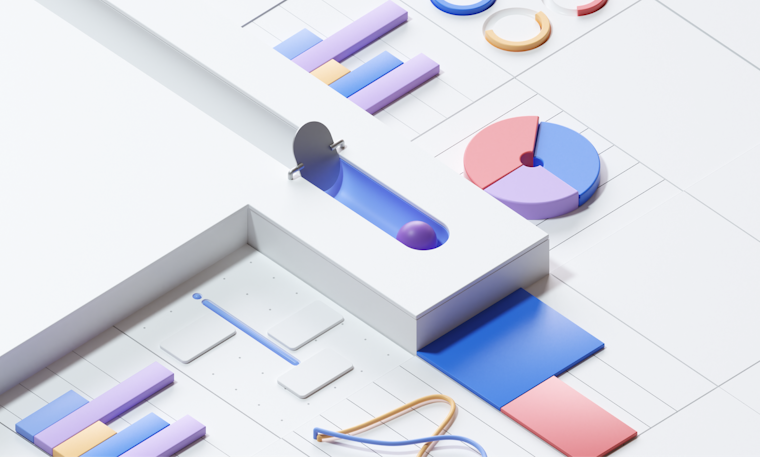
Image: Maze
Visual aesthetics are reaching new heights
94% of first impressions are connected to design, and a good design can deliver up to 75% of a business’s website credibility. Where is this leading modern UI design in 2021?
Minimalism & simplicity
Minimalism and simplicity are becoming a trend now more than ever before. Scrap the clutter, figure out what’s essential to your interface and leave out anything that isn’t 100% necessary.
2D Illustrations & custom animations
At the same time, custom illustrations and animations are rife. Weird, wacky, and wonderful illustrations are used by businesses across their assets to bring their content to life.
Platforms like Blush have effectively democratized access to custom-made illustrations and make it easy for everyone to incorporate them into their brand—whether that’s on landing pages, in mobile applications, or somewhere else.
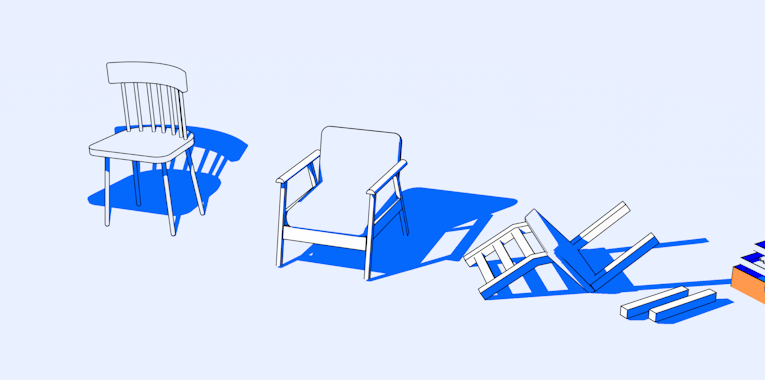
Image: Maze
These designs are coupled with scroll-triggered animations, geometric shapes, glassmorphism for menus or standout interaction blocks, and textured backgrounds.
UI designers are beginning to use truly immersive visuals to help tell a brand story and provide an interactive experience that’s equal parts memorable as it is usable. They not only help tell the brand story but help product messaging and positioning too.
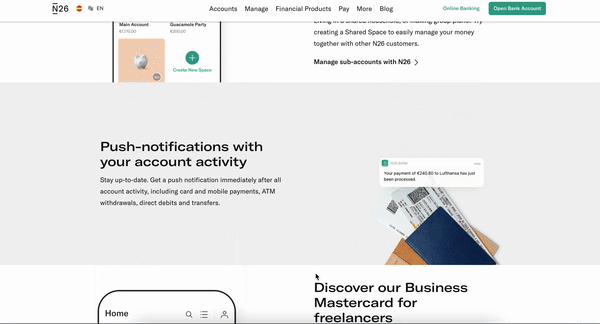
Image: N26
Custom typography and color palettes
Another big trend for businesses and design is custom typography and color palettes. Businesses are beginning to create their own fonts to provide a unique and scannable experience for readers. Ink trap fonts and large font sizes are a highlight for this.
When it comes to color, palettes are changing quickly. Many businesses are using pastels, whereas others are choosing bold, bright, and playful color choices. One thing’s for sure: we’re no longer seeing UI design experts sticking to two-three colors to represent their brand.
Both of these trends are creating unique and memorable experiences for users and visitors alike. They’re giving UI experts a wider choice of design styles to play with.
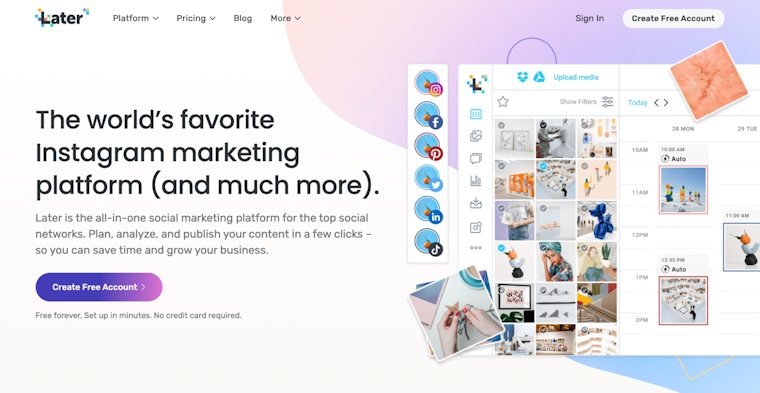
Image: Later
UI design is embracing new technologies
Artificial intelligence, augmented reality, and virtual reality rely on relatively new technology to enhance someone’s experience. Modern UI design sees designers embracing this technology for what it is today—not waiting for it to be perfect.
AI and the sheer amount of data it can process is leading to more personalized, intimate experiences than users have ever had before. It’s up to UI design experts to integrate AI in a way that feels natural and unobtrusive for the user.
For example, at WWDC 2021, Apple introduced AI as a completely unobtrusive aid to our everyday tasks. Our phones will now be able to read text and numbers in images, so for example, if you take a photo of a number, you’ll be able to save it directly to your address book rather than having to read the photo and copy it over.
AI will also help wrap all of our notifications up into one bit-sized, newspaper-style delivery, rather than the endless trickle of messenger notifications we’re used to, making for more of a magazine-feel interface.
AR and VR are going through similar trends for general users. UI designers now need to take into account AR and VR device holders, as well as those that don’t have access to these devices. This means UI design needs to be more inclusive and responsive than ever before—we’re no longer designing for one device or screen, but on some occasions, entire realms.
Customization is becoming the norm
Perhaps one of the most leaned on new trends for UI design is putting the design into the eyes and hands of the beholder. Customers need to customize their interfaces, in some cases down to the pixel and with a frictionless process.
For example, apps today are letting users pick a “mode” or a color version of the brand’s logo that fits a user’s aesthetic, like Revolut and N26.
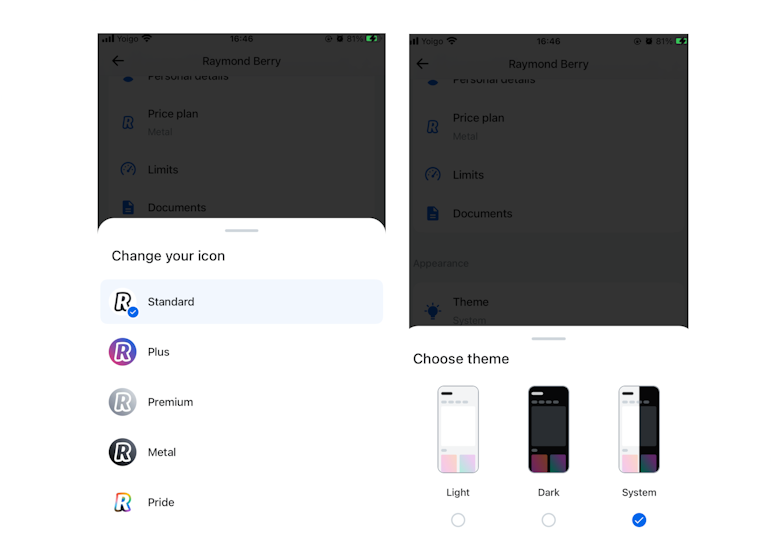
Image: Revolut & N26
Taking this a step further, Apple is introducing custom design modes to meet users where they’re at in their day. The entire experience is personalized to offer Apple users the most relevant information they need at one moment in time.
An interface is no longer a one-shoe-fits-all situation.
The same is happening with Android. With Material You, the signature design approach of Material Design from Google since 2014 is still there but with a more dynamic and customizable interface.
Android devices will be easier to customize than ever before. Google plans to deliver a boutique UI design experience where you pick the changes you want—like a wallpaper—and Google fills in the blanks with their expert AI suggestions.
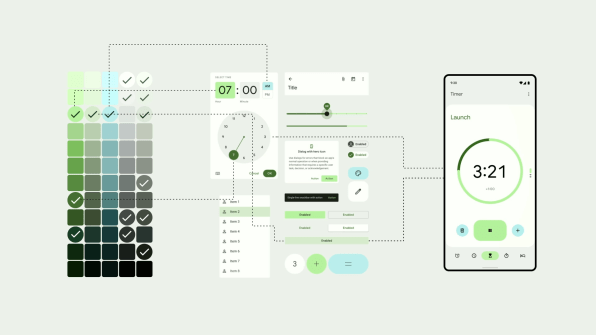
Image: Google
Ultimately, Google is giving users total control—down to each pixel. They are out to empower Android users to create an interface that visually appeals to them and includes any unique needs they may have. For example, using high contrast lines, larger fonts, touch-aids, and more.
For UI design experts, this trend means that they will need to be creating interfaces that are adjustable, flexible, and empowering if they want them to be a success. Hopefully some of these design trends have sparked UI design inspiration for you and your current projects.
How to create a modern UI design
To meet user needs in 2021, you’ll need to adopt some best practices as part of your UI design process. These design practices are taken from the best UI design examples and should help lift your work and design process for future projects.
1. Practicality over aesthetics
Modern designs are not just about aesthetics. We see a need for practicality and customizations, as Google demonstrates with ‘Material You’ overcoming ‘Material Design.’
This change is driven more and more by changing cultural norms. Long gone are the days of heavy Instagram filters. Instead, minimal filters, practical TikTok and Youtube videos are beginning to hold a higher value.
What does this say about our designs? People are championing practicality. Usability has always been a key aspect of great design and remains the case in 2021.
2. Design inclusively
Not only is inclusivity mandatory if you want your design to appeal to as many people as possible, but we’re also in an era where if your design is not inclusive, you’ll be called out for it.
Pride Month 2021 saw a wealth of customers calling out brands on social media that were raising flags for LGBTQI+ people yet actively donating towards political campaigns that discriminate against those people.
If you’re not keeping inclusivity in mind, be prepared to face the wrath of the consumer.
3. Be consistent
Consistency is a key principle of UI design. This comes through consistent UI design elements like visuals, interactions, copy, and more.
According to Jakob’s Law, users expect your product to work the same across the board and align with industry standards and competitor websites. When navigating your interface, they shouldn’t have any surprises or unfamiliar elements.
4. Set the narrative
“For me, the big one is defining the narrative. So, considering the full user journey as a story and deciding what to tell users and where.
This kind of approach means we never overload users with information, reduce cognitive load, and help them navigate a user funnel with minimal friction.
It lets us in UX design prioritize the types of UI design elements we need and the primary purpose of each placement, leading to more focused content for the user.”
—Andy Mckendry Senior UX Writer | Content Designer & Strategist.
5. Enable learning without learning
As Joel Spolsky of Trello said: “A user interface is well-designed when the program behaves exactly how the user thought it would.” This needs to remain consistent within your UI design if you want designs to remain modern.
“Don't try to reinvent the wheel. Focus on what's yet to tackle instead of trying to go around the standards already in place and expected by the user. This way, even a new interface will feel familiar and intuitive, instead of possibly becoming a nightmare to figure out, equaling more time-consuming in comparison to the eventual ‘competition.’”
—Filipe Fernandes: Digital Product Designer
Users should intuitively know where to go and how to interact when navigating a new product. Let your users learn your interface with ease by creating interfaces according to the established laws of UX and common design practices.
8 skills for modern UI designers
UI design experts need to be consistent, cohesive, and deliberate in their approach. So the core skill for me is strategic, big-picture thinking.

Andy Mckendry
Content Designer and Strategist
Share
Let’s explore eight skills that all modern UI design experts need to create effective user interfaces in 2021.
1. Strategic
Andy Mckendry, a senior UX Writer, content designer, and UI strategist, mentions:
“Web designers, both content and visual, need to consider entire user journeys, match up user wants and needs with business goals, and create seamless, frictionless experiences. To do this successfully, web designers, UX and UI, need to focus on the big picture and the more specific granular stuff.
Everything from high-level messaging strategies to the color of a CTA button.
UI design experts need to be consistent, cohesive, and deliberate in their approach. So the core skill for me is strategic, big-picture thinking.”
2. Customer-centric
We’re living in a customer-first world, and our products come secondary to our customer’s needs and problems. All UI design experts need to have their customers at the front of their minds as they design and remain their biggest advocate from initial mood boards to product builds.
A UI designer must rely on user research and feedback to build a product interface that is useful, learnable, and inclusive of people and their needs. The opinion of your user should be considered just as much, if not more so, than that of your design team.
3. Adaptable
Filipe Fernandes, digital product designer, pushed adaptability for a must-have UI design skill, here’s why:
“Trends and requirements are fast-paced when it comes to change. The more one is prepared to let go of the initial solution and has an open mind when it comes to new proposals to keep up with technological evolution, the better.”
4. Forward-thinking
UI designers need to be forward-thinking and aware of where things are going in the future—considering what’s happening today.
UI experts can’t be scared to create ‘out there’ interfaces if their data shows it will be entirely necessary in a few years. Embrace the future.
Trends and requirements are fast-paced when it comes to change. The more one is prepared to let go of the initial solution and has an open mind when it comes to new proposals to keep up with technological evolution, the better.

Filipe Fernandes
Digital Product Designer
Share
5. Data-informed
Adding on to being futuristic, UI design experts can’t be relying solely on gut instinct when it comes to making decisions.
Any move a UI designer makes needs to be backed up by user research to ensure their designs are validated by real data. This doesn’t mean being driven by data—but always keeping the pulse on customer feedback and testing designs before launch.
6. Empathetic
This skill is nothing new in the product design process and web design. Empathy has and always will be a huge must-have skill for UI and UX designers alike. Why? Designers need to understand where a user is coming from, be conscious of their needs, and build products that are as inclusive as they are practical.
Whether building empathetic apps, or creating a voice user interface, if UI design experts are not leading with empathy, they’re simply not leading.
7. Empowering
With the advancement of Material You on Android and Apple’s phone modes, there’s now a huge responsibility for UI design experts to empower their users. Users are getting more creative freedom than ever before.
UI designers can’t build static products and expect to reach everyone. Make interfaces adaptable and flexible to different people, meet them where they’re at, and pick up anything they don’t want to do.
8. Bold
Last but not least, UI designers need to be challenging the status quo constantly. Just because something is being accepted and has been for a long time doesn’t mean it’s good enough or that it’s even liked in the first place—perhaps it’s accepted because that’s all there is.
Both Apple and Google are making intricate tweaks to their products that people didn’t necessarily ask for, but people also didn’t know it was possible, so they couldn’t ask for it in the first place. For example, using AI to separate the speaker’s voice from background noise on video calls.
How can UI design experts do the same? Challenge the status quo, look at flaws and faults your product or web design currently has and navigate a way to fix those.
You want to provide a design solution people didn’t know was needed or available to them, but they love all the same. This comes when you log user data, use modern tools in your development process, and make informed decisions with user research.
By doing so, you’ll introduce modern interface designs that push the boundaries of what’s possible—whether it’s voice user interfaces, mobile apps, or something else.
Wrapping up modern UI design
In closing, we’ll leave you with some thoughts and opinions from Filipe Fernandes, sharing his predictions on the future of UI design.
“With a multitude of device types getting more expanded and integrated into our daily lives, I see a future where we'll be having less and less of a typical rectangle canvas that we currently take for granted.
For example, it's expected that wearable devices will start becoming the new normal. Designers will have to adapt and consider that all the freedom we typically had now has to be closely balanced with real-world advancements.
Minimal design will have to take the lead, with minimal distractions and conscious designs for user safety when designing for on the go devices.”
